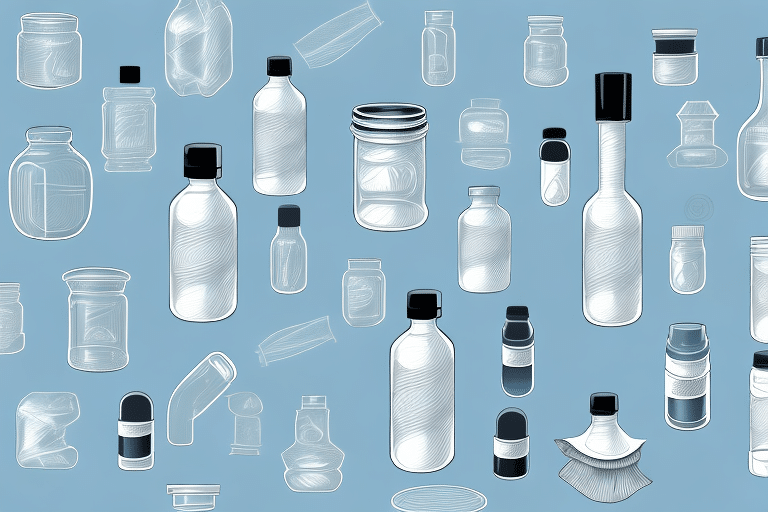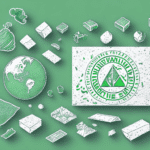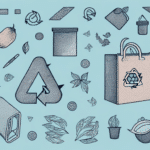The Benefits of Sustainable Plastic Packaging
In recent years, awareness of the need for sustainable packaging solutions has surged, particularly within the plastic packaging industry. Traditional plastic packaging often ends up in landfills or our oceans, significantly contributing to global pollution. In response to growing concerns about plastic waste, sustainable plastic packaging has emerged as a viable solution that addresses environmental challenges while offering businesses an effective packaging alternative. This article delves into the concept of sustainable plastic packaging, its environmental impact, and the benefits it provides to both businesses and consumers.
Understanding Sustainable Plastic Packaging
Sustainable plastic packaging encompasses plastic materials that are recyclable, biodegradable, or derived from renewable resources. Unlike traditional plastic packaging, which can take centuries to decompose, sustainable alternatives break down naturally, minimizing environmental harm. Additionally, these materials are often designed for reuse, reducing waste generation and decreasing the overall environmental footprint.
Types of Sustainable Plastics
- Bioplastics: Made from renewable resources such as corn starch, sugarcane, or potato starch, bioplastics are both biodegradable and compostable, making them ideal for applications like food packaging, bags, and containers.
- Recycled Plastics: Produced from post-consumer waste, recycled plastics can be reprocessed and recycled again, fostering a circular economy.
- Plant-Based Plastics: Derived from plant materials, these plastics reduce reliance on fossil fuels and lower carbon emissions during production.
Environmental Impact
According to a 2023 EPA report, sustainable plastics can reduce carbon emissions by up to 30% compared to traditional plastics. Additionally, the biodegradation process of these materials significantly lowers plastic pollution in natural habitats.
The Negative Impact of Traditional Plastic Packaging on the Environment
Traditional plastic packaging has a profound and far-reaching impact on the environment. The production of conventional plastics consumes vast amounts of energy and releases substantial greenhouse gases. Once discarded, these plastics can persist in landfills and oceans for hundreds of years, leading to severe pollution issues.
Wildlife and Ecosystem Damage
Plastics have been found in the digestive systems of marine animals, causing injury and death. A study published in Nature Communications highlights that over 100 million marine animals succumb annually to plastic ingestion (Nature Communications, 2020). This not only affects individual species but also disrupts entire ecosystems and biodiversity.
Human Health Risks
Toxic chemicals from plastic waste can leach into soil and water sources, posing significant health risks to humans. Microplastics have been detected in drinking water, seafood, and even air, raising concerns about long-term health implications.
The Emergence of Sustainable Plastic Packaging
In response to the escalating environmental concerns associated with traditional plastics, sustainable plastic packaging has gained prominence. This shift is driven by both environmental advocacy and consumer demand for eco-friendly products.
Biodegradable Plastics
Biodegradable plastics, made from natural materials, decompose over time, thereby reducing the volume of plastic waste. This innovation aligns with global efforts to mitigate plastic pollution and promote circular economy practices.
Economic Benefits
Adopting sustainable plastic packaging can lead to cost savings in waste management and disposal. According to a 2019 Ellen MacArthur Foundation report, businesses that embrace sustainable packaging can enhance their brand image, attract environmentally conscious consumers, and potentially increase market share.
Advantages of Sustainable Plastic Packaging
Sustainable plastic packaging offers numerous advantages over traditional options, benefiting both the environment and businesses.
Environmental Friendliness
These packaging solutions break down more quickly, reducing landfill waste and ocean pollution. Additionally, the use of renewable resources minimizes dependence on fossil fuels, lowering overall carbon emissions.
Versatility and Cost-Effectiveness
Sustainable plastics are highly versatile, suitable for a wide range of applications from food packaging to cosmetics. Moreover, advancements in production technologies have made these materials increasingly cost-competitive with traditional plastics.
Enhanced Brand Image
Companies that adopt sustainable packaging demonstrate a commitment to environmental responsibility, which can enhance their reputation and appeal to a growing segment of eco-conscious consumers.
Sustainable Plastic Packaging in the Food Industry
The food industry stands to benefit significantly from sustainable plastic packaging. Reliable and safe materials are essential to ensure food safety, and sustainable options meet these requirements while reducing environmental impact.
Biodegradable Food Packaging
Biodegradable plastics, such as those made from polylactic acid (PLA), offer a sustainable alternative for packaging perishable food items. These materials decompose naturally, minimizing plastic waste in landfills and oceans.
Cost Savings
By reducing plastic waste, businesses in the food industry can lower waste disposal fees. Additionally, optimizing packaging design can decrease material usage, leading to further cost reductions.
Sustainable Plastic Packaging in the Cosmetics Industry
The cosmetics industry is increasingly adopting sustainable plastic packaging to meet consumer demand for eco-friendly products. High-quality, visually appealing, and safe packaging is crucial in this sector.
Recyclable and Reusable Packaging
Cosmetic packaging made from recycled or plant-based plastics can be recycled and reused, significantly cutting down on waste. This approach supports the industry's shift towards more sustainable practices.
Reducing Carbon Footprint
Sustainable packaging options are often lighter than traditional alternatives, resulting in lower transportation costs and reduced greenhouse gas emissions during logistics.
How to Choose the Right Sustainable Plastic Packaging for Your Product
Transitioning to sustainable plastic packaging requires careful consideration of several factors to ensure that the chosen materials align with product requirements and environmental goals.
Assessing Product Needs
Evaluate the packaging's strength, durability, and safety requirements based on the product being packaged. For example, perishable goods may benefit from biodegradable materials that offer shorter shelf lives.
Evaluating Environmental Impact
Consider the lifecycle of the packaging materials, including their recyclability, compostability, and the resources required for production. Selecting materials with lower environmental footprints is essential.
Recycling and Composting Facilities
Ensure that the chosen packaging can be easily recycled or composted in the regions where the product will be sold. Collaborating with local waste management facilities can facilitate this process.
How to Make the Transition to Sustainable Plastic Packaging
Adopting sustainable plastic packaging involves strategic planning and implementation to ensure a smooth transition and maximize benefits.
Research and Selection
Conduct thorough research to identify sustainable plastic options that best suit your products and industry. Evaluate suppliers based on their sustainability practices and material quality.
Staff Training and Communication
Train employees on the proper use and handling of new packaging materials. Additionally, communicate the benefits of the transition to customers to foster transparency and trust.
The Future of Sustainable Plastic Packaging: Trends and Innovations
The landscape of sustainable plastic packaging is evolving rapidly, driven by technological advancements and increasing consumer demand for eco-friendly solutions.
Advanced Bioplastics
Innovations in bioplastic formulations are leading to materials that offer better performance and faster biodegradation rates, expanding their applicability across various industries.
Smart Packaging Solutions
Integration of smart technologies, such as QR codes and NFC tags, into sustainable packaging can enhance consumer engagement and provide information on recycling practices.
Increased Recycling Rates
Improved recycling technologies and infrastructure are making it easier to process sustainable plastics, thereby closing the loop and supporting circular economy initiatives.
Best Practices for Using and Disposing of Sustainable Plastic Packaging
To maximize the environmental benefits of sustainable plastic packaging, it is essential to follow best practices in both usage and disposal.
Proper Use
Use sustainable packaging as intended, avoiding misuse that can compromise its environmental benefits. For example, ensure that compostable packaging is composted rather than mixed with regular waste.
Responsible Disposal
Dispose of packaging materials through appropriate channels, such as recycling programs or industrial composting facilities. Educate consumers on how to properly dispose of sustainable packaging.
The Role of Consumer Choice in Promoting Sustainable Plastic Packaging
Consumers play a pivotal role in driving the adoption of sustainable plastic packaging. Their purchasing decisions can influence companies to prioritize eco-friendly packaging solutions.
Demand for Sustainability
As more consumers prioritize sustainability, businesses are incentivized to adopt packaging that aligns with these values to remain competitive and meet market demands.
Educating Consumers
Businesses should actively educate consumers about the benefits of sustainable packaging and how to properly use and dispose of it. Transparent communication fosters trust and encourages responsible behavior.
In conclusion, sustainable plastic packaging presents a compelling alternative to traditional plastics, offering environmental, economic, and reputational benefits. By embracing sustainable packaging solutions, businesses can significantly reduce their environmental impact and contribute to a more sustainable future.




















